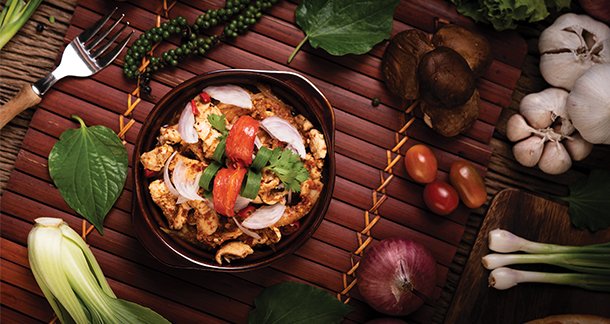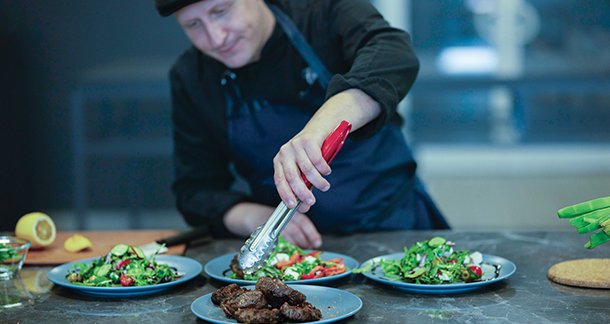Cultural and fusion foods show how culinary arts and the blending of traditional recipes have been updated over time. This is one of the reasons for the innovation of unique dishes, which also get appreciation from different cultures. So, people seeking novel tastes and diverse culinary experiences are making fusion cuisine popular at present. Meanwhile, globalisation is already influencing dining experiences. That’s why you should understand how you could make it a part of your experience, whether you’re a chef or a food enthusiast. Let’s dive deep into it.
Understanding Fusion Cuisine
Fusion cuisine has its roots in historical interactions between different cultures, often resulting from trade and colonisation. Mainly, this culinary trend took place in the late 20th century only. Blending ingredients and cooking techniques were the main characteristics of these diverse culinary traditions. For example, sushi burritos combine Japanese sushi elements with Mexican burritos. This unique dining experience comes out to be appealing to a vast audience.
Experimentation and innovation are the bases of fusion cuisine. So, chefs mostly explore flavour pairings that may not traditionally coexist and also take inspiration from various global cuisines. Properly balancing flavours and textures is what results in a successful fusion dish, as this is all about respecting the essence of each culture while creatively merging them.
Methodology in Fusion Food Processing
There are some key steps for processing fusion food to make sure that various culinary elements are perfectly integrated. At first, ingredient selection is crucial, so chefs must choose those elements that can complement each other better and keep the cultural origins alive at the same time. When it comes to providing freshness to the item, seasonal and local ingredients are more than enough.
Recipe development is the next step, where traditional dishes and their preparation methods come into the frame. Chiefs experiment with all these elements, but they may start by adapting familiar recipes or creating entirely new ones. During the entire process, chefs don’t overlook the tasting sessions, as this impacts the overall feel.
Cultural sensitivity is another critical aspect, so chefs must decide a fine line between innovation and respect for cultural heritage. This is because a food item that honours its roots while allowing for creative expression is what we call a successful fusion cuisine. That’s why keeping everything in mind while making such an item is crucial.

Uses of Fusion Foods in the F&B Industry
Fusion foods are now a valuable tool when it comes to innovation within the F&B industry. Restaurants have started leveraging fusion cuisine so they can attract a diverse clientele and give unique dining experiences. Adding global flavours to their menus helps them have an edge in a competitive market. Asian-inspired tacos or Italian sushi rolls are some of the popular examples of the same.
Plus, fusion foods also contribute to various dietary preferences. This is relieving to those who seek vegan or gluten-free options without sacrificing flavour. So, chefs should adapt traditional recipes to meet these needs while introducing new ingredients and techniques.
Fusion Foods can also enhance catering services due to its diverse menu options that are suitable for various events and celebrations. This versatility is what attracts catering companies, as they believe that these innovative offerings can impress their clients.
Challenges and Criticisms
Fusion cuisine has gained more popularity than expected for some obvious reasons, but still, it faces several challenges and criticisms within the culinary community. The balance between authenticity and innovation is one of the main concerns. Some critics argue that fusion dishes can dilute traditional recipes or misrepresent cultural elements. So, when chefs are borrowed from other cultures without proper understanding or respect for their origins, this is when the questions arise.
Poorly executed fusion dishes can also create negative perceptions among diners who expect a harmonious flavour blend but instead encounter mismatched ingredients. Dishes that lack coherence are a common pitfall and are often called “confused” dishes. This mainly happens when chefs have less adequate knowledge or experience.
Maintaining quality while experimenting with diverse ingredients is always challenging for chefs. Chefs who may not have the expertise in how all cuisines are fused together mainly face this problem. So, successful fusion cuisine requires careful consideration of various flavour profiles and cooking techniques.
Conclusion
Cultural and fusion foods reflect how wide modern gastronomy is, which also contributes to the F&B industry. A chef’s understanding of various innovative dish-related methodologies can result in a balanced product, which impresses consumers while respecting their cultural roots. Demand for unique dining experiences is undoubtedly growing. With this flow, fusion cuisine will likely play an increasingly important role in shaping culinary trends worldwide. So, this is the new approach for making both your taste buds and your moral values satisfied.



